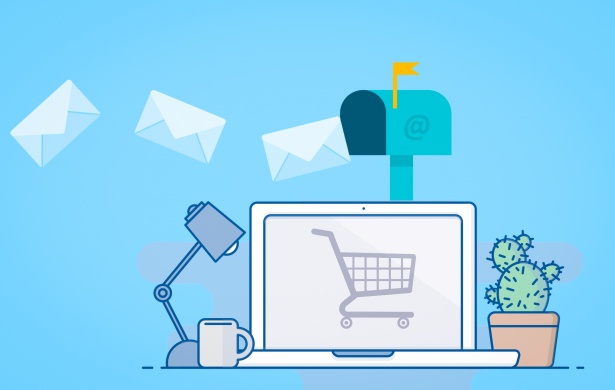As big data is starting to feel comfortable, there has never been a better time to sink your teeth into the numbers. In case you’re asking “What’s the difference between regular data and big data?”, here it is: “Big data” is a term used for the massive amounts of data typically collected by businesses from their own processes and from their customers by different means.
Marketers are getting a handle on how to do big data correctly. When leveraged wisely, big data can reveal some very useful trends and patterns that can lead to significant improvements in a company’s various strategies, including its marketing strategy.
Companies use sophisticated software to analyze this data to find hidden insights that can help them better tailor their products or services to customers, and improve performance or anticipate demand. Data analytics is no longer a new concept, and all the hype that has surrounded big data for the last few years is settling into normalcy. For intelligent handling of big data, here are some best practices that are shaping 2017.
Humanized Data
Big data is reshaping the marketing profession but the technology-driven approach to data analytics may indicate that progress is stalled. What’s needed is a look to the human side of data, allowing marketers to actually know about the audiences that they are interested in. Truly valuable customer data actually comes in two forms: thick data and big data.
Thick data is generated by anthropologists, ethnographers, and others skilled at observing human behavior and its underlying motivations. Big data is generated through touchpoints that companies have with customers. There has been very little dialogue between the groups who use these respective approaches, but you can solve many problems by actually combining the two approaches.
You can make better creative decisions by gathering data that allows you to get an emotional picture of what a particular audience cares about. This is considered empathy data, and it can help drive a creative output. Launching a large survey may not get the real insights you need. This may lead to even greater uncertainty and calls for coming up with thicker data, gaining insights from spending time with consumers. This would entail the help of social sciences researchers going shopping with customers and/or observing them in everyday situations.
Creating Value For Your Customers
Big data does big things for marketing. It promises to answer two of the most vexing questions in the world of marketers: 1) Who buys what, when, and what price? and 2) Can we connect what consumers read, hear, and watch to what they buy and consume?
Answering these questions makes marketing more efficient but in answering them and chasing the next transaction, marketers are overlooking the issue of longer term customer loyalty.
When using big data, you need to create value for customers, not just target them. Shift from asking what big data can do for us and focus on what it can do for customers. This doesn’t mean firms should stop trying to predict and capture the next purchase altogether, but they should know that they can only expect average returns from this activity in certain industries.
Use more strategic questions about longer-term customer stickiness and relationships. For example, one of the big questions every company should ask: What types of information will help my customers reduce their costs or risks?
Contextualized Data
Putting data into a broader context gives you a story. Having a clear picture of the effects of different tactics on key performance indicators (KPIs) enables you to make decisions on the next steps. Before you can put your marketing data into context, you need to know what you’re dealing with. Understand things like what your conversion rate measures, before you try to make sense of changes in your conversion rate or other KPIs.
The first step to contextualizing data is understanding what each of the important metrics truly means. For example, what does a 4.5% conversion rate mean? It means that for every 100 clicks on your ad, between 4 and 5 of those people become customers. In other words, 4.5% found your product and presentation compelling enough to trust you to fulfill a need. Look at how your conversion rate has changed over time and consider what marketing actions correspond with those changes, specifically the peaks and valleys.
The Right Kind of Data
It’s safe to say that “big data” is a ubiquitous term. It has become a sexy buzzword that a lot of companies are throwing around, but many of them still don’t know what to do with it. The value doesn’t lie in just “bigger” data but quality. Companies have been competing to claim the biggest, most audacious data sets. Relevance is what matters. That’s where the challenge lies.
Uber is often heralded as a big-data success story. While Uber does capture a wealth of information, its success isn’t in the big data it collects. Uber’s success comes from the small, right data it needed for the simple task of dispatching cars.
Sometimes the right data is big and sometimes the right data is small. The key for innovators is to figure out what those critical pieces of data that drive competitive position are. Those pieces of right data are what you need to seek out fervently. To successfully find this, here are three questions to get down to the right data:
- What decisions drive waste in your business?
- Which decisions could be automated for the reduction of waste?
- What data would you need to do so?
Personalization
Marketers believe that personalization is the direction to take into the future, thus making it a strategic priority. While immediate signals of context like geolocation, site searches and cookies can target an e-commerce experience, true personalization relies on data to drive the experience.
There are plenty of ways to personalize. The frequency with which you reach out to your customers can make the difference between your marketing effort being perceived as very helpful or very annoying. Factors such as the time of day, day of week, and even day of the month on which you contact someone play a role in the impact you have on them.
Personalization is key, especially when strategically executed, from content customization to delivery times based on customer preferences. Here are some tips to personalize big data:
- Start simple. Start with the homepage, email, and other basics to get things right before jumping into complex personalization.
- Dedicate resources and make sure you have solid basic data management processes.
- Continuosly test your personalization campaigns
- Let customers opt in/out of personalization.
We are past the days of big data for big data sake. The analytics we use in marketing are only as valuable as the insights we gain from them. These insights are what you build strategies around.
Don’t just collect and target customers, create value for them. Personalize your marketing efforts and connect with customers. You have to bring the human element into big data. Finally, consider context. When you put big data into a broader context, a story emerges. This story can help you make the right decisions.















